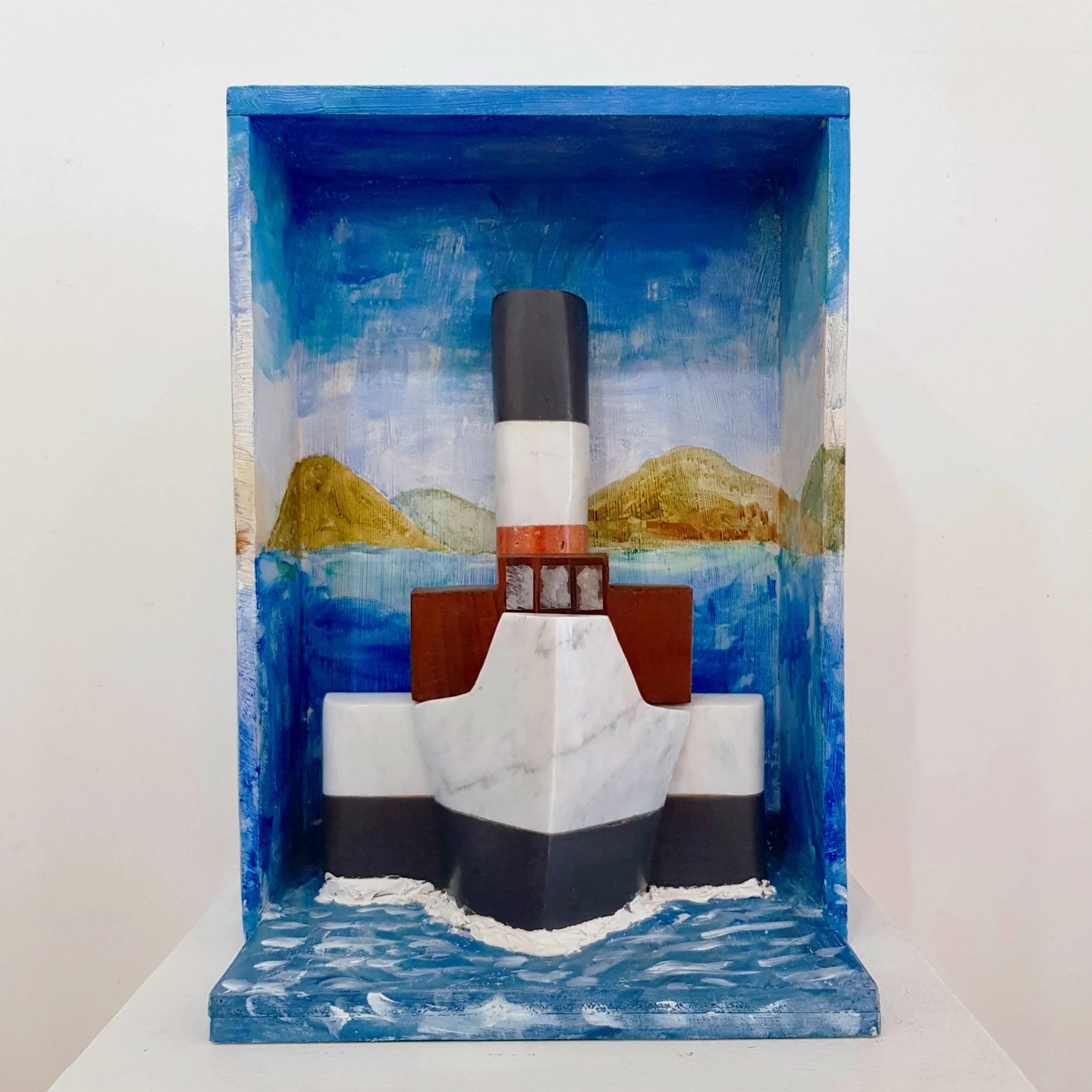All the Way to the Bank
10 March 2022
Cartoons are not just for children - comic strips have a strong following in Europe and the US, but does it translate to the UK?
Huon Mallalieu
Huon Mallalieu is an historian who writes on art, antiques and collecting for The Times, Country Life and The Oldie. He is the author or editor of many books, including The Dictionary of British Watercolour Artists and 1066 and Rather More, a Walk through History. He is FSA and Hon RWS.
Philippe Geluck, Hommage à Banksy, 2019, Sérigraphy on canvas and gilt frame, 100 x 70 cm.
Image courtesy of Huberty & Breyne.
A case could be made for tracing the ancestry of the strip cartoon back to ancient Egypt by way of the Bayeux Tapestry and Chinese and Japanese scroll paintings, but that would surely be wasted effort. Much more to the point for the art market are the traditions that emerged during the 20th century as Franco-Belgian bandes dessinées (BD) and American superhero comics. As so often the British were somewhere in between. The use of the word ‘comic’ to describe graphic magazines might be thought to have hobbled the British market, but it certainly hasn’t troubled American collectors, as huge prices for Marvel Comics and superhero artworks demonstrate.
In January this year a single page from a 1984 Marvel Comics issue of Spider-Man was sold by Heritage Auctions of Dallas for $3.36m (£2.5m), and last year, a 1962 Spider-Man comic sold at auction for $3.6m, beating Superman as the most expensive comic ever sold. These prices are partly due to Hollywood money, which also drives the American market for Japanese manga comics - Disney with even bigger eyes and spikier hair. The Japanese themselves do not collect them much, as with a few exceptions such as classic cars, they have less reverence for the obsolete than many other cultures.
In Europe the centres of the BD market are Brussels and Paris, and unsurprisingly the leading dealer in the field has galleries in both cities. Alain Huberty and Marc Breyne, who have been based in the Sablon in central Brussels for 30 years, recently moved to the Ixelles area, a little to the south. In Paris they are in the avenue Matignon, and they also act as éxperts for specialist auctions held by Christie’s.
Brussels in particular takes ‘comic’ art seriously. Even if you are not a lover of the form, the Centre Belge de la Bande Dessinée in the Rue des Sables is well worth a visit as it is housed in a lovely Horta building and has an excellent, reasonably priced restaurant. The city has also organised a trail of about 60 walls painted with characters from Franco-Belgian BD. One of them is dedicated to Philippe Geluck, whose character Le Chat provides a splendidly wry critique of modern art and artists. Another mural is for Edgar P Jacobs, creator of the long-running Blake and Mortimer series which is having an exhibition at the Centre for its 75th anniversary. In fact, the mural is the third for Blake and Mortimer, two previous buildings having been demolished. Although his heroes are English (an Oxford professor and an M15 agent), the Bruxellois Jacobs has never developed a strong following in Britain. In May 2016 Christie’s Paris took €205,500 for a black and white ink drawing for a 1955 Blake and Mortimer.
Page 25 from the 1984 Marvel comic Secret Wars No. 8, featuring the first appearance of Spider-Man's black costume. Sold for $3.36m at Heritage Auctions in January 2022.
Image courtesy of Heritage Auctions, HA.com.
Jacobs was a friend and collaborator of Hergé, whose Tintin books are a market of their own, equalled only by Goscinny and Udzero’s Asterix. Unlike other Franco-Belgian characters these have always been fashioned and marketed to attract other national markets, and thus their appeal is universal. Last November Artcurial, another Parisian auctioneer to hold regular BD sales, took €573,000 (£481,583) for a 1969 drawing of Tintin, Snowy, Captain Haddock and Professor Calculus welcoming Neil Armstrong to the Moon - which they, of course, had visited in 1950. It was a European record for a Hergé watercolour. However, in 2016 a 49.2 by 94.3cm pen and ink drawing by Hergé for the poster advertising a display dedicated to BD in the Belgian Pavilion of the Montreal Universal Exhibition doubled the estimate at Christie’s Paris to make €601,500. Cover illustrations for Asterix have made over €1.5m.
The British market lags far behind, partly because some of the best work of the kind was for 20th century children’s publications, and the ranks of those with fond memories of them are thinning. Among the foremost graphic artists was Frank Hampson with his Dan Dare strip in The Eagle between 1950 and 1969, but the Chris Beetles Gallery in London, which promotes such illustrations, tells me that the top prices are likely to be well under £10,000. Although rare copies of the Rupert Bear Annual from the Daily Express strip, which has been published ahead of Christmas every year since 1936, have fetched more than £20,000, original drawings by Alfred Bestall its creator are more likely to be around £500. At that price, you'd be mad not to.













